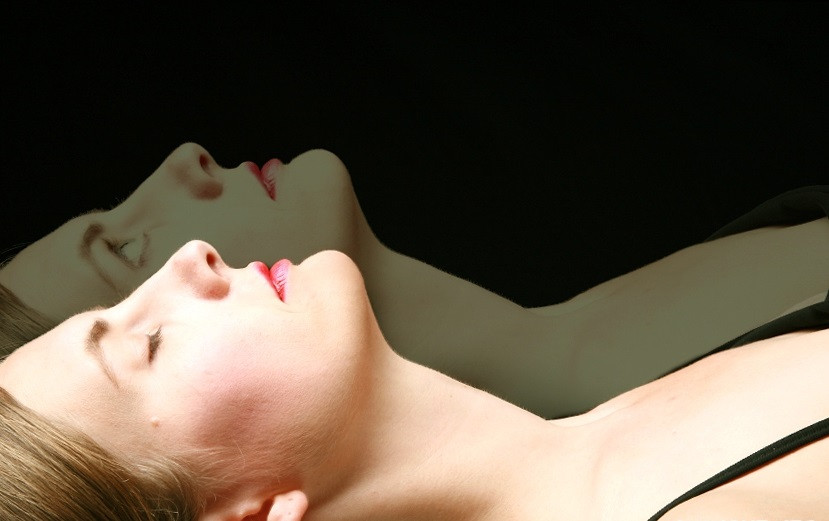Have you ever woken up and found yourself unable to move your arm or leg, raise your head, or move your fingers or toes? You see and understand everything, but you cannot move or speak.
It is called "sleep paralysis", and it happens when some part of the brain is awake, but the parts that control your body are still asleep, so when you try to move, you can't do it for another few seconds or even minutes. Very often, this condition causes great fear.
Sleep paralysis can happen to anyone
Nitun Verma(a sleep physician and spokesman for the American Academy of Sleep Medicine at Crossover Health) said that his healthy patient developed insomnia that prevented her from sleeping for weeks on end. Her wake-up time was constantly changing, but every night she could not get more than five hours of sleep. During the day she felt tired, and only a cup of coffee (and sometimes three) brought her to her senses.
Once, the girl complained that when she woke up, she could not move and breathe. She saw and understood everything, but when she tried to move her head or hands, nothing happened. The patient felt impending doom and panic. Terrified, she tried to scream, but she couldn't make a sound. Suddenly, her boyfriend, who was lying next to her, moved, and the ability to move was sharply restored.

The doctor immediately realized that the girl had experienced an episode of sleep paralysis. This was good news because sleep paralysis is a safe (though scary) condition.
This happens quite often. Systematic review published in a journal Sleep Medicine Reviews in 2012 showed that 7.6% of the world's population has experienced sleep paralysis at least once. According to a review by Brian A. Sharpless, Ph.D., clinical psychologist and professor of psychopathology at the American School of Occupational Psychology, women and individuals with anxiety disorders are more at risk than other populations.
Sleep paralysis happens when certain areas of your brain wake up earlier than others.
There are two parts of the brain associated with sleep paralysis: parietal lobe and temporal. Sometimes these two parts wake up a little apart from each other, so the body continues to sleep and does not listen to you.
You can think of the brain as hundreds of light bulbs, each connected to a sleep switch. Ideally, when the brain wakes up, all switches should work at once, then the whole brain will wake up as a whole. Sometimes, however, some switches fire early and the rest of the brain tries to catch up. When consciousness wakes up before your limbs, sleep paralysis occurs.
Sleep paralysis usually occurs during awakening. This type of sleep paralysis is the most common, according to a 2012 review published in the journal Physiological Reviews. Another type occurs when you fall asleep, and the parts of the brain responsible for moving the body fall asleep before the parts responsible for consciousness.

Sleep paralysis happens both to healthy people and to people suffering from various sleep disorders (narcolepsy, idiopathic hypersomnia). If sleep paralysis occurs in healthy people, and does not depend on other conditions, it is called "isolated".
Sleep paralysis is often accompanied by hallucinations
A report in the journal Consciousness and Cognition reports three common types of hallucinations among sleep paralysis sufferers:
- "Intruder" or the feeling that someone or something is in the room with you
- "Incubus", or feeling that something is sitting on the chest
- "Unusual bodily experiences", or the sensation of flying or swimming
There are cases when people, once faced with hallucinations, tried to avoid sleep as long as possible. They tried to go to bed later to minimize sleep time. According to the American Academy of Sleep Medicine, this leads to insomnia, which itself can increase the incidence of sleep paralysis.
Sleep quality should be a priority
Several factors can worsen the condition, such as irregular sleep and alcohol consumption. To minimize the chance of sleep paralysis, get 7-9 hours of sleep every day, and try to wake up and go to bed at the same time each day.
In severe cases, your doctor may recommend antidepressants, which affect the release and reuptake of neurotransmitters that form signals between neurons in the brain. According to Dr. Sharpless, antidepressants are officially not considered a treatment for sleep paralysis, but in some cases they can reduce the frequency of attacks.
You can't just tell yourself to wake up

That's where the fear comes from. Baland Jalal, a researcher at the Department of Psychiatry at the University of Cambridge, recently proposed meditation approach to get out of sleep paralysis. His four-step approach includes the following:
- Tell yourself that sleep paralysis is a common, benign, and temporary condition.
- Remind yourself that there is no reason to be afraid
- Focus on something other than the paralysis, such as positive thoughts or a mantra
- Try to relax your body and not move until the episode is over.
Despite the fear, these episodes are harmless and are usually a sign of something bad. If you have tried the strategies above and are still experiencing sleep paralysis, then it's time to visit your doctor. It will analyze your sleep habits and see if there is anything else it can do to help you.











Aromatherapy - Essential oils: table of properties and uses
Cleansing the energy of the apartment with a church candle
Essential oils for aromatherapy: properties, uses and contraindications
Weakness in the body and drowsiness: causes in adults
How to clean an apartment from negativity with a church candle